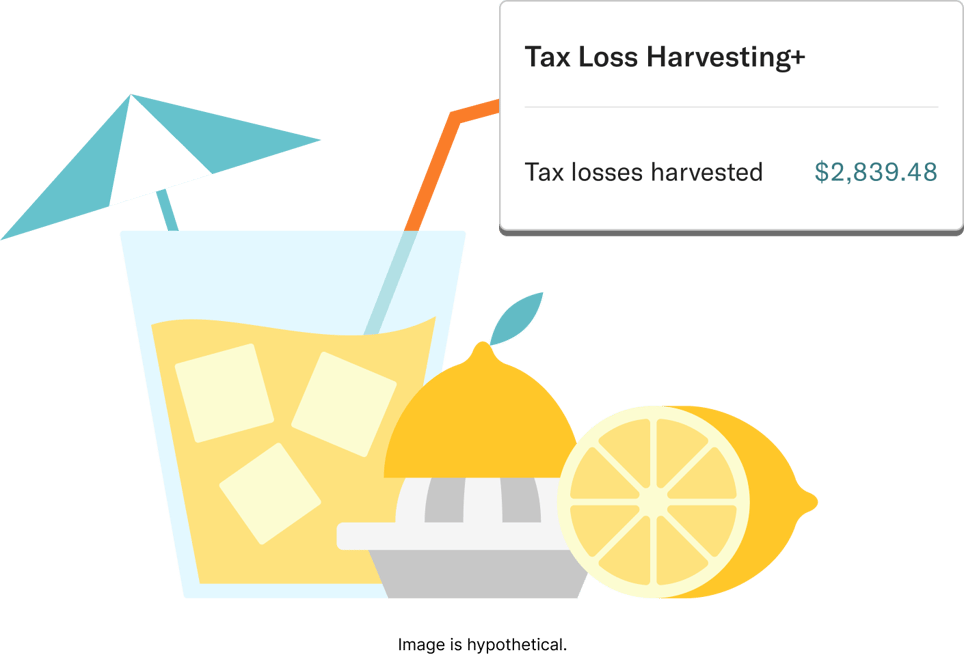Technology-driven tax loss harvesting
ADVANCED TAX-SAVING STRATEGY What is Tax Loss Harvesting+?
Tax loss harvesting is the practice of selling a security that has experienced a loss. By realizing, or "harvesting" a loss, investors are able to offset taxes on both gains and income. The sold security is replaced by a similar one, ideally maintaining an optimal asset allocation and expected returns.

-
The upside to capital losses.
Realized losses on investments can offset gains and reduce ordinary taxable income by as much as $3K per year.
-
Making it accessible.
Tax Loss Harvesting+ is automated once enabled and available at no additional cost to investors who are managing money with us.
-
Optimizing the strategy.
Tax Loss Harvesting+ looks for opportunities to harvest regularly and is designed to minimize tax impact.
| Tax Loss Harvesting+ | Traditional TLH | |
|---|---|---|
|
Automated algorithm that checks regularly
Betterment TLH+ checks regularly for harvesting opportunities. |
|
|
|
No extra trading costs to harvest losses
All harvest transactions are covered by your Betterment management fee. |
|
|
|
Every harvested dollar reinvested
Some tax loss harvesting methods avoid reinvesting dividends and hold cash deposits until after wash periods have passed, for simplicity. Our algorithm is built to handle this complexity, so your portfolio should not hold cash. Tax Loss Harvesting+ is specifically optimized to allow you to be invested while navigating wash sales. |
|
|
|
No short-term capital gains tax
Some tax loss harvesting methods switch back to the primary ETF after the 30-day wash period has passed. This can create short-term capital gains tax that may dramatically reduce the benefit of harvesting losses and even leave you owing more tax. Our algorithm only moves back to the primary ETF when it is appropriate for your account. |
|
|
|
IRA harvest protection
Selling an ETF for a loss in your taxable account, and then buying the same ETF in your IRA, can cause a permanent wash sale, destroying the benefit of loss harvesting entirely. We strive to ensure that IRA deposits do not undermine a harvest. |
|
|
|
Harvest rebalance
When shares are sold at a loss, the proceeds are intelligently reinvested in the asset classes that will bring your portfolio back into balance, rather than simply defaulting back to the asset class they came from. Betterment trades in fractional shares, which means our algorithms seek to harvest and rebalance every penny of your account for maximal potential tax benefit. |
|
|
|
Customer-realized losses protected
Tax Loss Harvesting+ minimizes wash sales, directing cash inflows into parallel assets. The system protects not just harvested losses, but also any losses realized by the customer in accounts at Betterment. |
|
|
Tax Loss Harvesting+ (TLH+) is not suitable for all investors. Consider your personal circumstances before deciding whether to utilize Betterment’s TLH+ feature.
